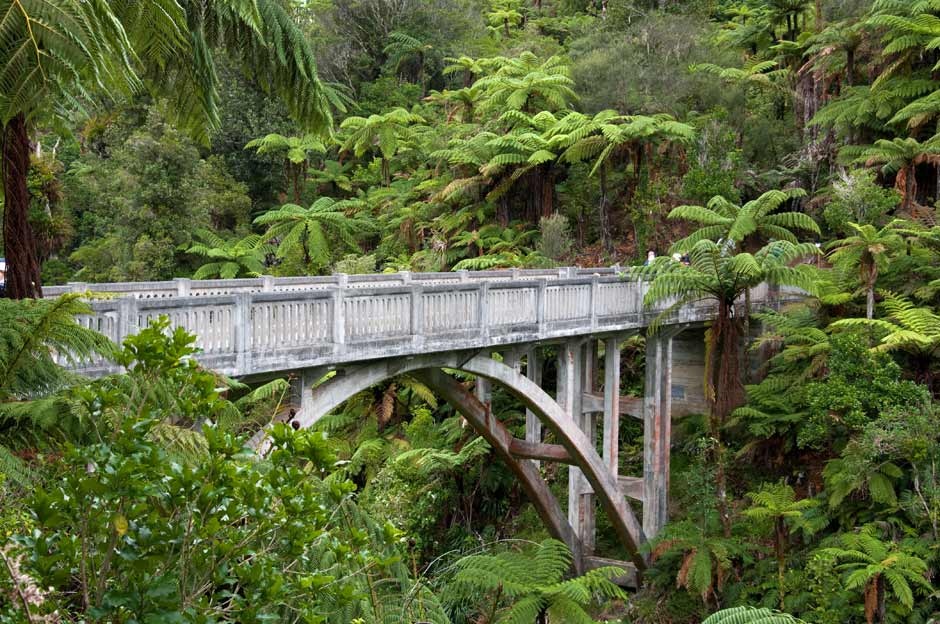
The ‘Bridge to Nowhere’ (1936)
Bridge to the ‘valley of abandoned dreams’
Although land and resources were fast running out, frontier New Zealand was still being developed between the wars. We have seen an example of latter-day private enterprise pioneering at Port Craig. Public enterprise also fell on its face about the same time with its soldier resettlement programmes. After the First World War, the government had promised a land fit for heroes, but the Reform government’s generosity sometimes fell well short of its platitudinous patriotism. Writer Rewi Alley later wrote feelingly about his struggle in rural Taranaki, and the 40 families who took up land in the isolated Mangapūrua Valley inland from Whanganui were let down even more cruelly.
They began optimistically enough. Their 450-ha farms had to be hacked out of the steep, virgin bush in one of the last large-scale pioneering efforts in New Zealand history. They set up a school in an abandoned house in 1926, but the presence of that house merely underlined the problem. New Zealand’s brief postwar recovery collapsed sharply in 1921 and the rest of the decade was bumpy. Prices fell, yields dropped and the high rainfall washed out bridges and sent unstable rock crashing down onto the road. At first the settlers relied on river steamers but after the road was metalled it became their outlet to the railhead at Raetihi. In vain they struggled to patch the road while appealing for a concrete bridge to replace their timber suspension one. With almost fictional irony, by the time that contractors Sanford and Brown handed the expensive, permanent bridge over in June 1936 most of the soldier families had walked off their land. Just three families were holding out in 1942, when heavy rain wrecked the road. The Public Works Department refused to restore it and in May 1942 Cabinet ordered the remaining settlers out, compensating them with £250 per family.
They trudged out wearily and sadly, leaving the bush to reassert itself. Hunters and trampers had ‘the valley of abandoned dreams’ to themselves until 1986, when the government added the valley to the new Whanganui National Park. By then weeds were growing thick on the decking of the bridge, which had acquired iconic status with the ever-increasing number of park users. In 1995 the ‘bridge to nowhere’, as it had become known, was repaired to serve a new public.
The bridge is now busier than ever, catering for sometimes well-heeled tourists. It has become a symbol of futility, but we should remember that most of the 5000 servicemen and their families who took up farms offered by the government did not walk off the land. Some did very nicely. The ones who threw in the towel were the people on isolated and/or infertile land, and some of them might have stuck it out had they not also been clobbered by the Great Depression.
Further information
This site is item number 94 on the History of New Zealand in 100 Places list.
Websites
- Heritage New Zealand List
- DOC historical information
- DOC walk information
- Consolidation of land settlement - Te Ara
- Biographies of Maungapurua Valley residents
- Meet the Locals - TVNZ (video)
Book
- Arthur P. Bates, The bridge to nowhere, Wanganui Newspapers, Wanganui, 1987



Community contributions